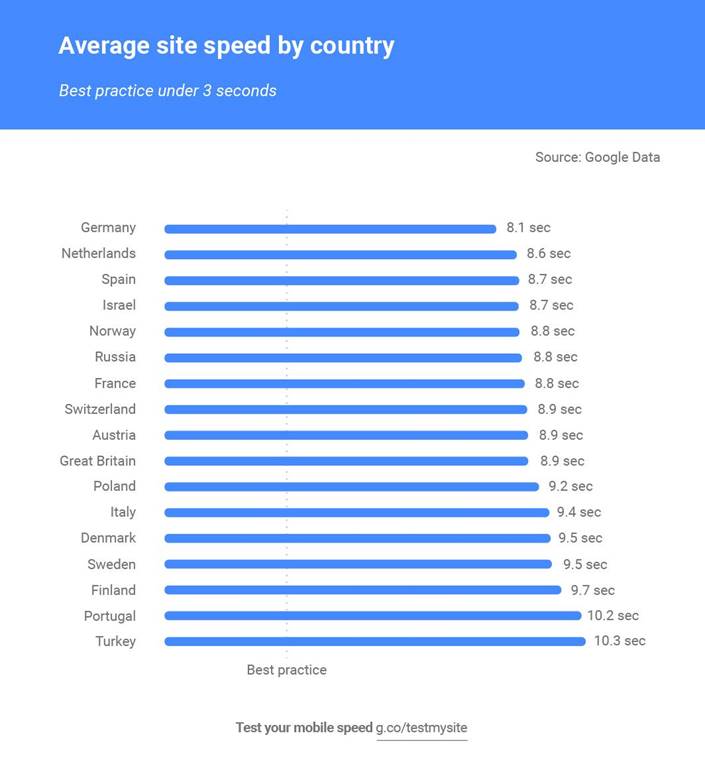Britain is one of the slowest countries in Europe in terms of mobile site load speed, according to an analysis by Google.
The UK languished in tenth place out of 17 countries, with mobile web pages taking an average of 8.9 seconds to loads – a concern indeed, considering it also found 53% of users will give up if it takes longer than three seconds, while 50% think it should be quicker than two seconds.

When it comes to which types of sites are the best (or least worst) performers, the speediest were found to be Classified & Local (8.148), Finance (8.227) and Education & Government (8.600), all coming in over six seconds more than the best practice of three seconds.
Unfortunately, considering the impulse nature of online shopping, Retail sites were the slowest performers – clocking a paint-drying 10.290 seconds – followed by Automotive at 10.259.
With mobile taking a bigger proportion of both users’ browsing and online purchases (one in three, according to Google), the results should be a wake-up call for the importance and potential rewards of speeding up brands’ mobile user experience.
Run faster
Not just setting out to paint a dismal picture, Google revealed a number of measures developers can take to speed up their mobile sites, including ‘lazy loading’; having above-the-fold content load first, while JS and CSS-heavy files can be loaded later, once users start reading and interacting.
The search giant also suggests grouping similar files together (eg. JS with JS, CSS with CSS, etc) to reduce the number of requests a site must make to the server, while small images under 10KB can be combined into a sprite or web format.
Finally, Google recommends compressing images to below 100KB wherever possible; “GZIP can also reduce the size of text-based resources like CSS or JS by as much as 70-80%.”
See how well your mobile site performs by using Google’s Test My Site tool, which also benchmarks it against other sites in your industry as well as showing the potential impact of following its quick fixes.
